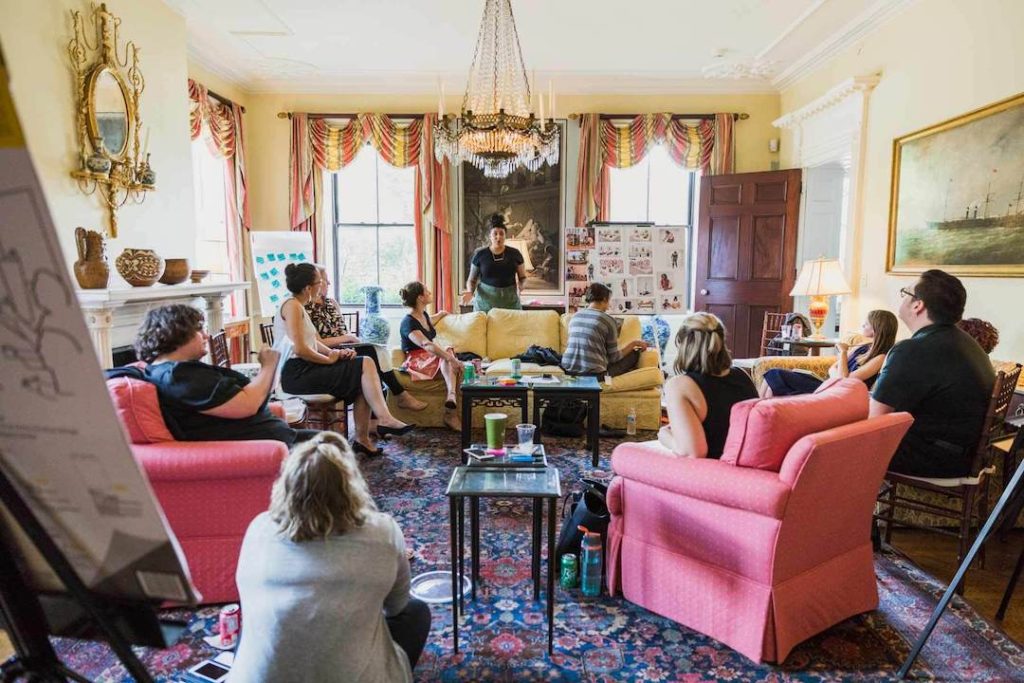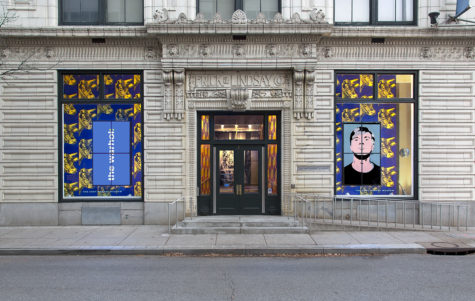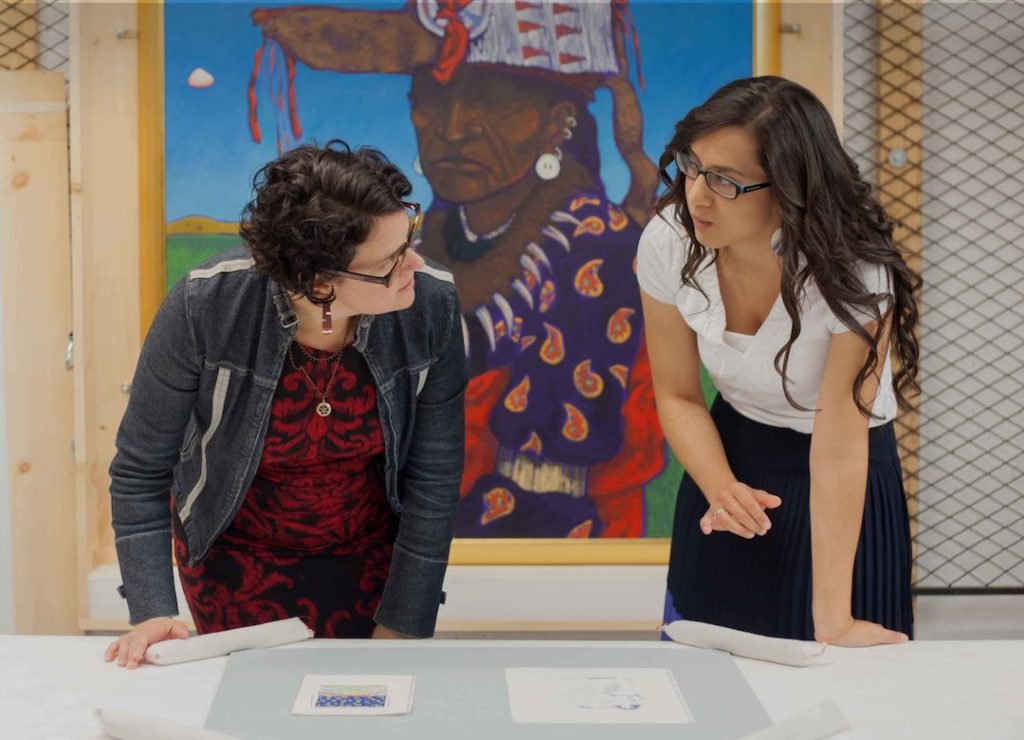Returning contributing blogger Wided Khadraoui currently works with Art Processors, an experiential design consultancy specializing in museum spaces, in marketing and business strategy. She previously managed a commercial art space for four years. She holds a MSc in Comparative Politics from the London School of Economics, and a MA from Central Saint Martins in Arts and Cultural Enterprise. She is passionate about technology’s potential to foster the inclusion of non-traditional and historically undervalued stakeholders and audiences in the creative sector.
In part one of this series, which was published on the VoCA Blog in March 2019, I argued that technology is an enabler and not the silver bullet to the diversity issues that plague the museum sector. In this second post, I wanted to consider a few specific examples of museums that have successfully taken into account diversity and inclusivity when deciding on stakeholder engagement and how that translates to audience and outreach.
A new understanding of what a museum can be—shifting from an inward self-serving mission that offers one-sided “community partnerships” to one guided by the needs of communities—is pivotal. By actively working on removing barriers and providing tangible financial support, museums can repurpose themselves as civic spaces, embracing the possibility afforded by technology, and become institutions with a relevant place in the community, in an increasingly competitive cultural space.

Despite all of the sector’s talk about inclusivity, equity, and diversity, the same tone-deaf approach persists. In a recent article in the Observer that reported on the unveiling of The Shed in NYC, there was a section that stood out:
For close to an hour on Wednesday, white male millionaire after white male billionaire spoke about the value of access and diversity, without attempting to articulate what that term might mean, let alone acknowledging their own lack of it. Ten-dollar ticket prices were vigorously applauded as if they weren’t still prohibitively expensive for those communities they were intended to benefit. Tamara McCaw, the Shed’s chief civic program officer (and the only person of color to speak that day), talked for only four minutes of the more than 50 discussing the programs serving neighbors and low-income residents throughout the city.[1]
What has been missing from most theoretical discussions on inclusivity are concrete proposals for the construction of a genuinely inclusive museum culture. While there are still considerable gaps between discussing change and applying suggestions to diversifying museum content, there are a wide array of best practice examples in the museum sector.
Technology is not the salve; instead museums should focus on:
- Finding ways of allowing multiple narratives and perspectives in museum spaces through curatorial practices, programming, and community outreach programs
- Listening to and implementing practices that reflect historically overlooked communities
- Creating space and opportunities in stakeholder positions
- Engaging with new ways of sharing institutional authority in a less hierarchical manner
Overcoming the challenges facing museums requires time, resources, collaboration, and meaningful commitment. Genuine inclusivity does not hinge solely on digital outreach aimed at “non-traditional” audiences; rather it depends upon the alteration of the current structures implemented and maintained by museum staffs, directors, and boards. There have been an array of cultural organizations experimenting with new models for community engagement and organizational structure. Here are a couple of notable examples with measurable outcomes:
- The High Museum of Art in Atlanta is a general arts museum, which has operated for more than 75 years. It has seen the proportion of non-white visitors triple to 45 percent in recent years with a new narrow focus on programming. That’s close to the percentage of people of color in the Atlanta area. In recent years the museum has committed to increasing the diversity of curatorial content and has organized more shows in-house; of the 15 shows organized in 2018, nine highlighted the “work of artists of color, women artists, and gay artists”. Additionally, the Museum rebranded their ‘voice’ to embody the idea of inclusivity by way of Southern hospitality and humility. A community centric tag line— “here for you”— embodies the museum’s new audience-focused mission.
- The Andy Warhol Museum has built a platform to cultivate museum professionals by establishing a presence in underserved communities in Pittsburgh. This program works to involve urban youth, who have few opportunities to engage with art, to see the museum as a community resource. The Museum has established a multi-tiered pipeline project that involves a dedicated focus on teens centred around youth outreach programs, internships, and mentoring programs. In a case study published by Ithaka SR on the Andy Warhol Museum, the museum’s director of learning and public engagement Danielle Linzer states; “articulating these pathways of inclusions are now goals of the larger organization and not just the education department,” Due to dedicated efforts of the staff as a whole the museum engaging with the wider community and increasing audiences of all backgrounds.

- The Ford Foundation and Walton Foundation launched a $6 million effort to diversify art museum leadership. Through the Diversifying Art Museum Leadership Initiative, grants will support innovative strategies to advance diversity across the sector. The Andy Warhol Museum is using the grant to widen community engagement and institutional awareness by establishing a presence in historically underserved communities directly working with kids who have few opportunities to engage with art, to see the museum as a community resource.

- The Peabody Essex Museum’s pioneering Native American Fellowship program is another example of a platform that supports and champions minority museum professionals. The program received a $1.3 million dollar grant in January 2019 from The Andrew W. Mellon Foundation to continue supporting its program. The fellowship provides training for rising Native American leaders in the museum, cultural, and academic sectors. Fellows are assigned high-level projects that connect to institutional initiatives and given opportunities to see how museums are run. Additionally, Fellows spend more than 40 hours in interactive workshops and seminars that include navigating organizational politics, communication, and Indigenous curation. The program provides specific fellowships in curatorial, educational, media and manuscript processing as well as mentorship opportunities with people with expertise in fund-raising, communications, and organizational politics. It is also crucial to note that these fellowship positions are paid.
Critical engagement in the creative sphere rests on dismantling socio-economic hierarchies and proposing new contemporary solutions. Tools afforded by digital platforms which can extend engagement are part of the solution for future and further integration. If the digital ‘space’ is beyond physical limitations, the opportunity to democratize that space and genuinely welcome people to new platforms can enact the idea of “if you build it, they will come.” What must be realized is that spaces that are unwelcoming for some are unwelcoming for all. They perpetuate social divisions and unhealthy social relationships between people and further limit social cohesion. There is plenty of opportunity for work to be done in the sector to move towards a more inclusive vision.
[1] Johnson, P. (2019). The Shed Plans to Be the ‘Museum of the Future’—Is This the Future We Want?. [online] Observer. Available at: https://observer.com/2019/04/the-shed-opens-at-hudson-yards-diversity-in-arts-programming/
